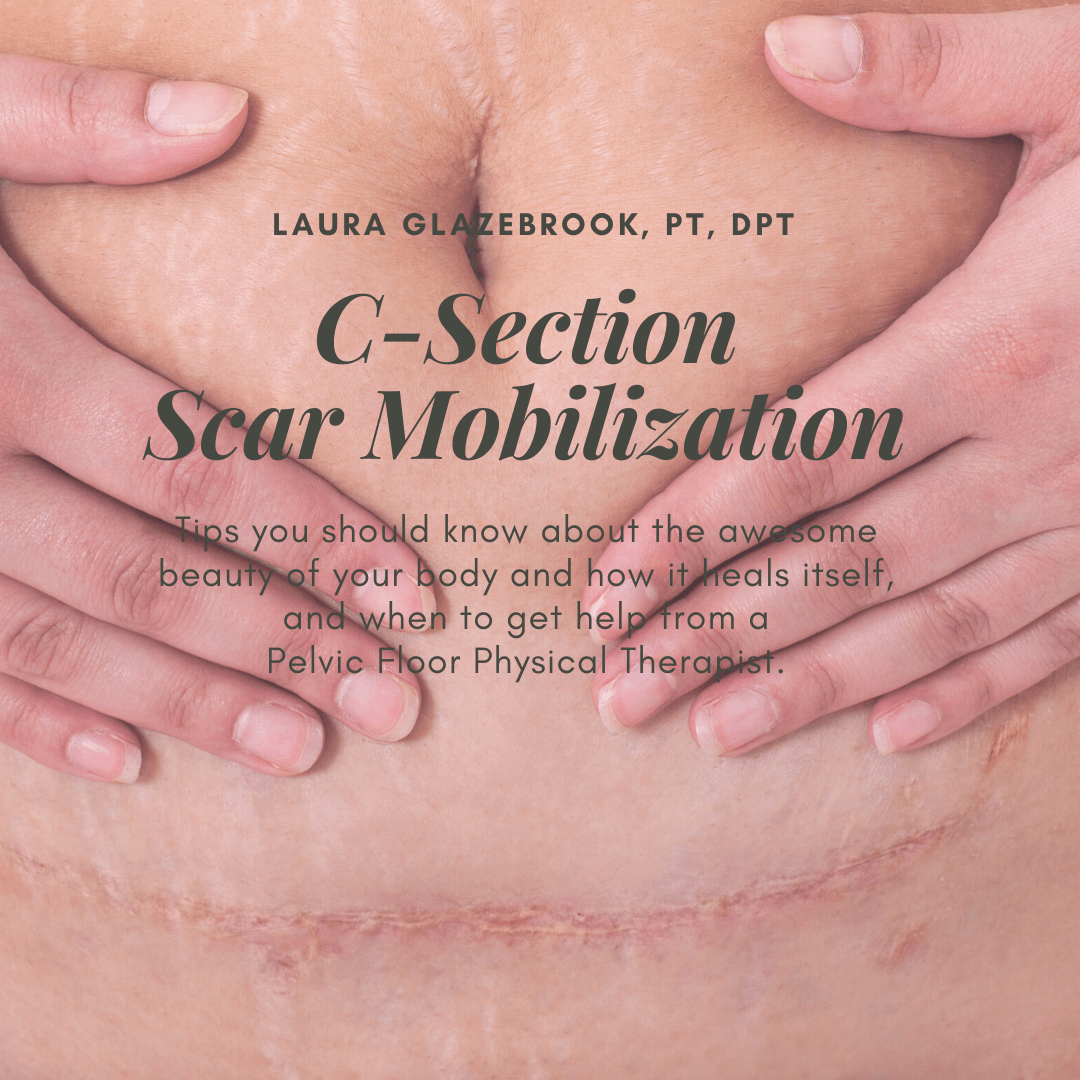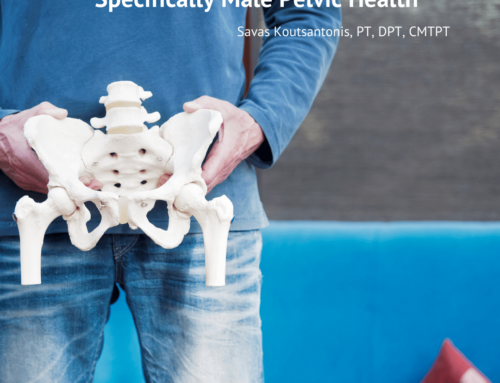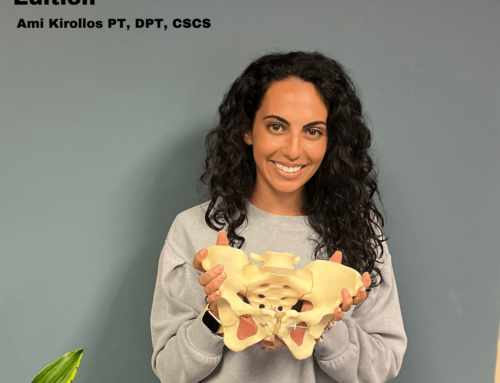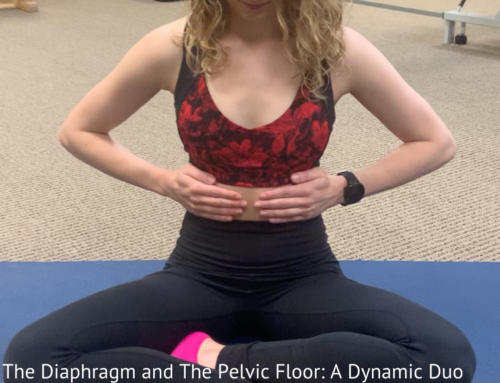Is My C-Section Scar Healing Well?

Considerations After a C-Section & When to Get Help!
The c-section scar is a specific type of scar that is very familiar to many American moms (statistically about 30%), yet it doesn’t get a lot of attention. Our c-section scars will continue to tighten and change over time, regardless of how old they are, and tight scars can create a whole host of problems. Some women with c-section scars can go for years without having any problems but will notice pain or other issues during perimenopause and menopause, when our hormones and collagen change. Others have problems much sooner than that. Unfortunately, not many healthcare providers educate women how to manage the c-section scar, nor do they understand the implications when the scar is not managed appropriately.
Surgery Is Trauma
Remember, surgery is trauma by its very nature. The surgeons cut through three layers of skin, unfold layers of fascia and muscle and move organs around to do their job. Next, think about all the crucial core muscles that got so stretched during pregnancy, robbing us of crucial stability needed to perform the simple every day movements as well as the activities that we love like daily exercise and sports. The c-section scar inhibits the muscles that were disrupted during the procedure, making it harder for them to work properly. When these muscles contract, they end up tightening the scar tissue and the surrounding fascia. Did you know that our c-section scars can continue to tighten over time, like when we gain or lose a large amount of weight or when we have a systemic illness or prolonged stress? The body detects the stressor as a threat and is simply trying to protect us, but as you now know, tightening an already tight scar can cause problems.
Here are the 4 tips you should know about the awesome beauty of your body and how it heals itself, and when to get help from a Pelvic Floor Physical Therapist.
1. Respect the magnificence of your c-section scar!
Consider all the various layers of skin, muscle, and connective tissue that had to be cut to allow your baby to be born! We’re talking 3 layers of skin, at least 3 layers of core muscle, the uterus (which is also a muscle!) and ALL of the fat and tissue in between! Respect that these c-section scars run deep, and follow the instructions from the hospital regarding protection during the initial phases. You may be told to brace your abdomen with a pillow during coughing and sneezing to decrease pressure on the scar, and limit activity in the initial weeks. Remember, however common it is (or how many repeat c-sections you’ve had), it is still a major surgery and your body needs to recover!
2. Know the healing timeline.
For the vast majority of us, we can expect for the c-section scar to be basically intact at around 10 weeks postpartum. Due to the limitations of our current healthcare system in the US, we typically will only see an OB, midwife or other healthcare professional once after birth, and only at about halfway through the healing process, with absolutely no follow up scheduled until the next yearly gynecological exam. Even more challenging, most of us have had no prior surgical experience and all are sleep deprived and dealing with the overwhelming task of managing a newborn, so our ability to absorb new information can be limited! Many OB practices and hospitals have a set protocol for how long stitches and bandaging should stay intact, and the majority of doctors have cleared the precautions by that 10-week mark.
3. Keep an eye on your scar.
Once you can visualize the incision, you can start keeping an eye on how it’s healing. The coloration of the c-section scar should start to fade from red to pink, and it should look pretty uniform. The c-section scar should become less tender to the touch as this happens. You shouldn’t see anything seeping out of your scar, if so contact your healthcare team to ensure it’s healing correctly. If you have a tendency toward keloid or hypertrophic scars (excessive scar formation), you may want to look into obtaining silicone strips to place over the scar and consider some gentle compression. Consult your doctor or Pelvic Floor Physical Therapist if you have questions or concerns.
4. Don’t be afraid to mobilize it!
After that 8-week mark, as long as your physician doesn’t have concerns with your c-section scar, you should be able to start gently moving it around. You can start on the skin surrounding the scar in the early stages, and move onto the scar itself (starting at 8 to 10 weeks) as tolerated.
Tips About How To Mobilize Your Scar:
- Place your fingers near or on the c-section scar and begin moving it and the surrounding skin in different directions, including up and down, along the scar, and making gentle circles. As it heals, you should be able to pick up the scar and the surrounding skin relatively easily, rolling it between your fingers. You’ll want to put a fair amount of pressure through it to make sure you’re getting all the layers of skin and connective tissue that were cut.
- If your c-section scar is very tender to the touch and you can’t rub it, start by gently touching it with a soft touch or cloth. As this becomes more tolerable, you can begin to use a rougher material and try the scar massage again.
- Initially, you will want to do this at least twice a day for several minutes at a time. As you do, you should notice the scar fade in color and maybe begin to look thinner or longer.
- The c-section scar should be pain-free and moving well within 6 months, but can take up to 2 years.
Pelvic Floor Physical Therapists Can Help!
All women would benefit from a Pelvic Floor Physical Therapy evaluation after baby, regardless of how they delivered or how long ago they delivered, for training, pelvic floor muscle assessment, and core muscle re-activation. Our pelvic floor is often referred to as the “floor of our core”, as it works together with our deepest core muscles (the transversus abdominis and the multifidi, or the deepest spinal muscles) and the diaphragm to maintain the pressures in our abdominal cavity and create the stability needed to move. The demands we place on our bodies require a dynamic system of pressure management, and a weakness anywhere in this system can cause pain and dysfunction. Think of how easily you can crush an empty soda can versus a sealed one filled with liquid. The walls may be relatively thin, but the pressure is what gives it strength. The very “walls” of our core are astronomically stretched and challenged during pregnancy and we undergo actual structural changes, so it’s a fair assessment to say we could all use a little guidance on how to make sure we are recovering well.
When To Seek Help:
- If your c-section scar is too tight or painful to move.
- If your c-section scar looks or feels overgrown.
- If you had (or are having) back, hip or pelvic pain during pregnancy or anytime postpartum.
- If you are experiencing constipation, leakage, painful sex or tampon use postpartum.
- If you have pelvic heaviness or a feeling of fullness in your vagina.
Pelvic Floor Physical Therapists have special training in soft tissue release techniques and reactivating the muscles that have been affected by pregnancy and childbirth, whether it was a vaginal or c-section birth. It is vital to make sure these muscles are working correctly, particularly after a c-section, to ensure our bodies are stable so we can avoid pain and problems further down the road.
Here are two fantastic resources to find a Pelvic Floor PT in your area:
- American Physical Therapy Association – Pelvic Health PT Locator
- Herman & Wallace Pelvic Health Rehab Practitioner Locator
- Pelvic Guru
Have questions or concerns about your recovery journey or want to get an evaluation post-baby? Contact our clinic and schedule an evaluation today! We are here to help you!






